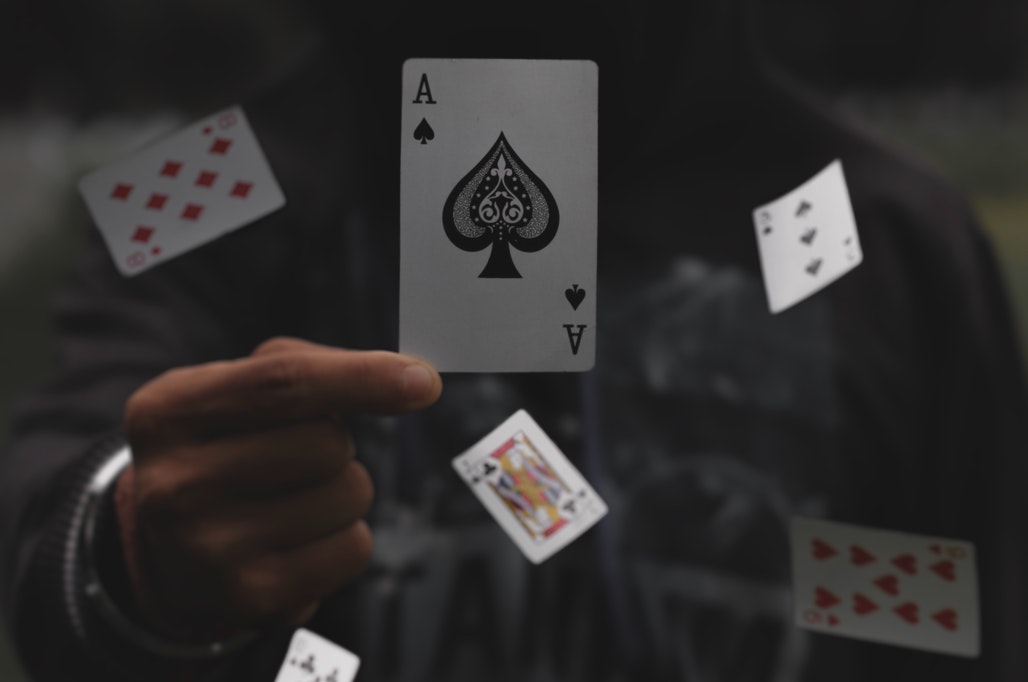As we grow older, scheduling all our activities within 24 hours of a day can be challenging. There’s a lot to do, and we often lack rest. We have a lot to do, from household chores to work tasks. We also have our social lives to take care of. There seem to be unending things to do and seemingly no time.
However, you might know some of your friends or workmates who can do many things. You might ask yourself, how can they do so much simultaneously as yours? The short answer: they have improved their time management skill.
As an adult, time management is an essential skill. Maximizing your time for work and getting enough rest is one of the most effective ways to avoid procrastination and stress.
6 Time Management Activities For Adults

If you’re looking for a better way to manage your time, you can do more of the following activities to improve your time management skills.
1. Circadian Rhythm
We all know that our bodies follow the internal 24-hour cycle. If you check the time you wake up, get hungry, or feel sleepy, you’ll easily see a pattern emerge. Your body releases certain hormones that help your bodily function throughout the day.
This is possible through circadian rhythm, a cluster of neurons manages that in the hypothalamus.
If you want your team to work in harmony, it’s important to have everyone in the same circadian rhythm, it might be a huge commitment from your team, but it will make things much easier for them in the long run.

How To Synchronize Circadian Rhythm
You can use circadian rhythm to your advantage in a simple activity. For example, you’ll need different colors of highlighters and a sheet of paper:
1. List hours in 30 minutes intervals from 8 am to 10:30 pm. The hours can be changed, but you have to start from waking up to sleeping
2. Write down your daily routine. Waking up, breakfast, lunch, snack time, unproductive and active hours, sleeping time, everything
3. Then, highlight each block with your mood at a time interval. For example, blue can signify “tired,” and red can signify “productive.” Feel free to add more moods
4. For more accuracy, you can record your mood in real time. For example, during work, try to note what mood you feel at a certain hour.
5. Take note of your productive and unproductive hours. Plan around those hours. When you feel active, schedule important tasks. When you feel a bit unproductive, assign those hours as break time.
6. Apply the new schedule and adjust to changes if necessary.
NOTE: You can add additional steps if you are in a group. Compare your circadian rhythm with your teammates and find a way to sync up your hours. Make sure everyone does the most important tasks during their most productive hours.
2. The Mayo Jar
As adults, you have almost full control over your full time. While this gives you freedom, sometimes, you forget how to manage your tasks properly. Most of the time, you do the tasks based on their deadline. However, that is not optimal.
After learning the circadian rhythm, you can still do many activities to manage your time better. The mayo jar activity is one of the most popular ones, which helps you better identify and manage your tasks.

How To Use Mayo Jar Activity
Mayo jar which is also called Rocks Pebbles Sand is easy to apply to improve your time management skills. First, you’ll need a few objects readily available in your household. Alternatively, you can easily buy a full set online.
1. Get an empty mayo jar, a few golf balls, marbles, and sand. If you do not have these materials, you can substitute the mayo jar for any huge jar where the golf balls will fit. You can also substitute golf balls and marbles with any sphere-shaped object of the same size.
2. The task is to find a way to put more things into the jar by utilizing its space. Remember to maximize the space to put in as much as possible.
The story goes that there’s a professor who has an empty jar. He then fills the jar with tennis balls. Then, he asks the class if the jar is full, to which they respond with a resounding yes.
The professor then adds marble to the jar. Next, he asks, “Is the jar now full?” The class answers yes once again. Then, finally, the professor fills the jar with sand. The moral of the story? You can add more things inside the jar by putting in the right things first.
Imagine if the professor added the sand first. Do you think the golf balls will still fit?
Of course not!
The same goes for your life and how you handle your tasks. If adults trying to manage their time will prioritize the smaller tasks and schedule their time around that, they won’t have another left to schedule their bigger, more important tasks.
If you filled your jar starting with the largest balls, you’d find a way to squeeze in smaller balls until you can fill the jar with sand. The same thing can be applied to your life.
The large balls represent the most important things in your life: your family, friends, relationships, and work.
The marbles represent the lesser important things you are still required to do.
Lastly, the sand represents the other things that do not affect your life but still need to be done.
Knowing how to prioritize these tasks can increase your time management skills. This will result in a more productive routine that can ultimately lessen your stress load.
3. Finding The Ace
This activity is best done with a small group. It’s a simple task that can teach people how to prioritize work and organize their daily lives. As adults, we are often swamped with a lot of work.
It isn’t easy to manage everything from household chores to employee tasks. However, sometimes, we only need to know how to organize.

How To Play Finding The Ace
For this one, you’ll need a few decks of cards. If there are three in your group, you should have three decks for this activity. At a minimum, there should be at least two players.
1. Shuffle one or more decks so the cards will be in random order. Meanwhile, one deck should be arranged in order.
2. Give one deck to each player. Then, ask them to find the ace of the spades.
3. The first one to find the ace of the spades will win. Repeat the activity three times.
At first glance, this activity seems to be unfair. After all, the one who has their deck arranged beforehand can easily find the ace of spades in a matter of seconds.
But winning is not the idea behind this activity. Instead, it teaches us one important skill in time management: organization.
If our tasks are not organized the way they should be, it’s harder tour tasks in time. Finding the ace teaches us that taking a few minutes to organize your tasks each day can give you better results in the long run.
This also teaches us that you should know how to organize your tasks better. In this activity, you learn the importance of arranging the cards before finding the ace. Likewise, in real life, you’ll notice that more important things should be tackled before moving on to the next task.
4. The Big Picture
We always hear the phrase, “look at the bigger picture,” when we deal with our day-to-day lives. You might hear it from your boss whenever something goes wrong in a project.
However, this important phrase enters one ear and leaves the other. As a result, we tend to ignore just how important looking at the big picture is. To remind us, playing The Big Picture activity might help.

How To Play The Big Picture
All you’ll need is jigsaw puzzles. This can be done alone, but it’s much better with a team.
1. Distribute the jigsaw puzzle among the players. However, don’t let them see the “big picture” or the end product of how the puzzle will look if it’s finished.
2. Let them complete the puzzle for a few minutes.
3. If they are having difficulties, you can end the activity early.
After the activity, ask them what made the activity difficult. They will likely say that they have no idea of the bigger picture, making it hard for them to put the puzzle pieces together properly.
You can then give them a picture of what the puzzle looks like and let them finish the puzzle. This time around, finishing the puzzle will probably be easier since they know what it should look like.
The lesson here is simple: doing tasks without thinking of the entire project or “the bigger picture” will cause unnecessary delays. However, it’s a much easier game if you know how it’s much easier to complete the project and look at things in perspective.
As adults, we all dream of having a lot of money that we can spend on many things. In this simple activity, you and your team can have a way to play out this fantasy. You’ll also learn important lessons that can help you change your view.

How To Play the $86,400
All you’ll need is a piece of paper for each player. If you feel like being fancier, you can even have a little more fun and print out fake checks where you can give $86,400 to each member.
1. The rules are simple. The players should use their money to buy anything they want. However, they cannot spend more than $86,400.
2. They only have 24 hours to spend the whole amount. After that, any unused amount will be taken from them.
3. On the piece of paper, the players should list everything they will buy with their money. If they have a remaining balance, they won’t be able to use it anymore
The discussion here is simple. In 24 hours, there are exactly 86,400 seconds. Like in the game, you cannot take a second back once the day is over. If you fail to use your time properly, you will never get it back once the day is over. So, how will you spend 86,400 seconds of your life every day?
6. Times Squared
Another activity for scheduling time, the Times Squared activity, helps with a few things. First, it gives you an overview of how productive you are each day. Second, it can help you analyze what activities take most of your time. Lastly, it allows you to balance your work and non-working time.

How To Do Times Squared
All you need to do is print out 3 pages with 24 squares each. You can arrange the squares in 5×6.
1. The rule is simple. Each square represents an hour of the day.
2. Throughout the day, the players should note how long they spend on certain tasks. For example, they take 8 hours a day to sleep. Therefore, they should label 8 squares for sleeping.
3. The first page should be for work-related activities. Then, the second page should be for tasks not related to work, such as sleeping, breaks, and meals.
4. The next day, the players should summarize all their activities on the third page. Mark the activities from the first page with a green highlighter.
After everyone is finished with finishes can then discuss what the third page—the ones highlighted in green show productive activities. Finally, there are a few questions you need to address when analyzing the third page.
1. How many productive hours do you have?
2. What’s the ratio between your productive hours and unproductive hours?
3. What steps can be taken to increase or maximize productive hours?
For each player, the answers to these questions might be different. But the end goal is to analyze how everyone is spending their days. This is useful to reflect on what you can do to increase your time management skills.
Conclusion
You can certainly do many activities to improve your time management skills as an adult. Each of the activities above helps someone improve aspects of their time management skill.
Whether reflecting on how we use our time, delegate our work tasks throughout the day, or remind ourselves to take a moment to look at the big picture, you’ll see that these activities can help you manage your time and tasks better.
Aside from learning many things from these activities, they’re also fun! These are perfect for adults who want to take a step away from their work for a moment to learn useful things they can apply to their work.


